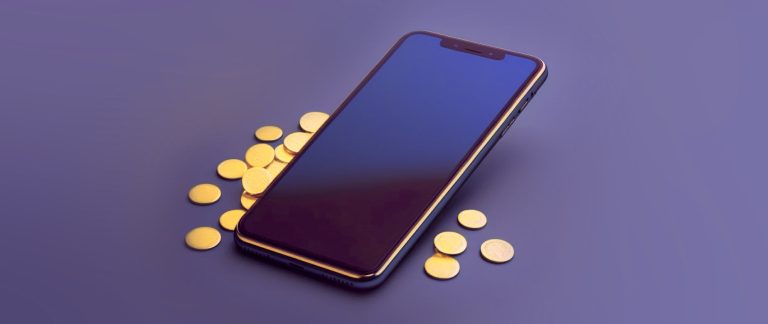Creating content online isn’t just a hobby, it’s also a viable new model for making a living. Technology has made creating photo and video content easy and affordable for anyone with a smartphone. Now, the online world is filled with people who’ve built a following by speaking directly to viewers about their favorite topic, no matter how niche. Once that content is public, there are numerous ways creators can leverage their following to generate income. Here’s what a content creator’s business model could look like, with a few successful examples.
What is a content creator?
Content creators are individuals, typically independent of any media company, who create videos, podcasts, social media posts, or other digital content for public consumption. Successful content creators build an audience of followers and earn money with their content.
Content creation has been around in various forms for centuries—any artist, writer, or filmmaker who has ever made something has technically created content. Yet the term “content creator” specifically refers to independent creators who make and distribute content through social media or other self-publishing platforms.
What is the creator economy?
The creator economy refers to all of the businesses and services that cater to the content creation industry and help them get paid. This new economy includes digital platforms such as Substack, YouTube, TikTok, and Instagram that help creators reach a wider audience. It also includes other digital products, like photo editing app VSCO, which makes it easy to alter visual content on your phone, or places like Shopify and Patreon, both of which help creators access new revenue streams.
Other businesses supporting content creators include talent agencies that help influencers and creators find media opportunities, and software services, such as Hootsuite or Sprout, which streamline content management.
Shopify Collabs: Get paid by brands you love
Discover the millions of brands on Shopify, share your favorite products, and earn when your followers buy.
Learn more
7 business models and revenue streams for content creators
Content subscriptions
Partnerships
Ads
Services
Merchandise
Referral links
Revenue sharing
Content creators need to think of their followers as potential customers and develop a business plan in order to start generating revenue. Creators can stick to one channel, or expand into other platforms to create multiple revenue streams. For example, a graphic designer might make money by charging a subscription fee for their design newsletter, or by selling novelty t-shirts on their website. Here are seven other ways content creators can make money:
1. Content subscriptions
Platforms like Substack and Patreon allow content creators to charge their readers and followers monthly subscription fees. Some platforms offer subscription tiers, which creators can use to offer exclusive content to followers who are willing to pay more.
2. Partnerships
Content creators will often partner with companies for brand sponsorships if both parties share a target audience. They may become a brand ambassador for the company and tout its products over a period of time in exchange for pay. Or they may post sponsored content, which is a type of promotional post endorsing the company’s products in one or a series of posts.
3. Ads
The terms “ad” and “sponsored content” are sometimes used interchangeably, but represent different monetization strategies. Sponsored content refers to original content created by an individual in partnership with a brand. The creator is paid to feature the brand’s product or service. Ads are messages designed by a brand’s marketing team. Advertisements like banner ads and display ads can appear on websites or blogs. On social media platforms, creators can allow brands to boost content they created and run it as an advertisement in user feeds or Instagram stories.
4. Services
In addition to leveraging their own channels to make money, creators can sell services like online courses or events. These are often related to the creator’s areas of expertise—a food writer could create a walking tour of local pizza restaurants, for example, while a tech industry thought leader might lead a course on fundraising. Creators can use different platforms, such as Eventbrite, to create and charge for events.
5. Merchandise
Content creators can design and sell their own merchandise on their websites using a product like Shopify. High-profile macro-influencers, those who have the biggest followings on social media, may also consider developing product lines related to their area of expertise. For example, YouTuber Liah Yoo launched the skin care brand KraveBeauty following her success as a beauty vlogger.
6. Referral links
People often turn to content creators that they trust to hear how they like certain products or services. As such, creators could use affiliate marketing links when they list or describe a product. These links track and attribute sales to a specific referral source, so that if a creator’s followers click a link from the creator’s channel and buy something, that creator makes money.
7. Revenue sharing
Platforms like YouTube offer a revenue share to content creators with large followings. YouTube earns money by running ads before and during video content. Eligible creators can apply to the YouTube Partner Program to receive a portion of the ad revenue generated by their video content. Channels with larger followings receive a more favorable split.
Examples of successful creator businesses
These are some content creators who have successfully leveraged their followings to earn income:
MrBeast. MrBeast is one of the most popular YouTube content creators, with 154 million subscribers on the platform. His videos involve him doing stunts, some of which are elaborate, and many go viral. He sells a wide array of merchandise, including apparel and accessories and even chocolate and gummies. He’s parlayed his success to philanthropy after giving away the first $10,000 he made from a YouTube sponsorship deal in 2017.
Andrew Rea. Andrew Rea rose to fame by making YouTube cooking videos under the title “Binging with Babish,” recreating foods from popular movies. He first launched his YouTube channel in 2006, and has since accrued over 10 million subscribers. In addition to video content, Rea has published a cookbook featuring recipes from his channel and developed a line of Babish cookware that is for sale on his website.
The Sorry Girls. The Sorry Girls are a group of friends that create home renovation content across multiple platforms. They have over two million subscribers on YouTube and 280,000 Instagram followers. The group also publishes blog posts, hosts a podcast, and operates an online shop selling home goods.
The Botez sisters. The Botez sisters are professional chess players and content creators. They are active on Twitch and have a YouTube channel with 1.3 million followers. Having over one million followers means the Botez sisters receive a portion of the ad revenue from their videos. In addition to web content, their website sells chess boards and chess-themed sweatshirts.
Alexis Nikole. Alexis Nikole (@blackforager) creates content as she forages for edible plants in parks and wilderness areas. Foraging has earned Nicole 1.3 million followers on Instagram and 4.3 million followers on TikTok. In lieu of posting sponsored content, Nicole has a Patreon with 290 subscribers that earns around $1,500 per month.
Ana Coto. Ana Coto (@anaocto) has 2.1 million TikTok followers who watch videos of her roller skating. Coto has partnered with major brands, including Lays and Candy Crush, to post sponsored content to her Instagram feed. She also works with a talent agency to coordinate media opportunities.
Caroll Salazar. With 32,000 followers on Instagram, Caroll Salazar (@makeuphuney) is considered a micro-influencer, or someone who has less than 100,000 followers, and creates beauty, humor, and family content. Salazar’s website links to a curated Amazon collection—she earns money when followers purchase her recommended products. She also sponsors a beauty box delivery service and works with an agent to coordinate partnerships.
Content creator business model FAQ
Are content creators and influencers the same thing?
Content creators are not always influencers, even though there is overlap between the two. An influencer’s primary product is their own personal brand, where content creators may or may not choose to market themselves as part of their content strategy. For example, the hosts of a successful gardening podcast may create content about indigenous plants and exotic trees, but not feature themselves prominently. They would be content creators, not influencers.
Is content creation a stable business venture?
It takes dedication and a clear brand voice to establish a social media presence and build a following. You may need to create content for several years before you attract potential clients and start making money from it. Even when you do, there are no guarantees you’ll earn a steady income.
What is a content creator kit?
A content creator kit refers to all of the tools required to make your content. For video creators, this often includes a tripod with a smartphone attachment, a ring light, and an app for editing. For content writers or social media creators, it might include a computer and social media management tool that can schedule posts.
Do I need formal qualifications to become a content creator?
No, you don’t need a specific degree, a sophisticated marketing strategy, or expensive software to create high-quality content. Anyone with a compelling idea can start creating content—no formal qualifications required. Depending on the type of content you’d like to create, you may not need much more than a smartphone and a computer.
How much money do content creators make?
At the highest level, a select group of premiere content creators can earn six figures on platforms like TikTok, Twitch, and YouTube—but most content creators earn significantly less. It takes a following of at least several thousand to earn significant income.






0 Comments